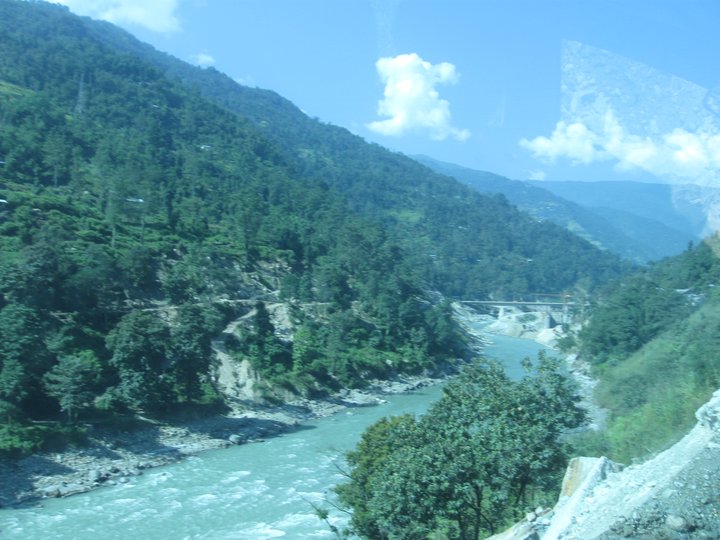
WANDERLUST Sea Nile Photo : M K Paul Samsara Mansarovar
The Nile River, spanning 4,160 miles northward from east-central Africa to the Mediterranean, stands as the longest river in the world. Not only is it the longest, but it was also a critical lifeline of Egypt that brought life to the desert.
Its water played an undeniable role in the rise of humanity’s earliest great civilizations. Every aspect of Egyptian life depended on the river, enabling cities to flourish in the midst of a desert. It was to an extent when Herodotus, a Greek historian, wrote “Egypt to which the Greeks sail is land acquired by the Egyptians, given them by the river”, the river he was referring to was the Nile River.
While the surrounding deserts and oceans provided security, it was the Nile River that bestowed ancient Egypt its sustenance, supplying them with food and resources, facilitating agriculture, providing crucial transportation routes, and fueling monumental construction projects. Although the modern name ‘Nile’ is rooted in ‘Neilos’, the Greek term for river valley, the ancient Egyptians called it ‘Ar’ or ‘Aur’, meaning “black”, referring to the rich, dark sediment it carried.
This stately river not only shaped the landscape, but also the history and culture of North Africa, propelling the rise of successful civilizations. The aim of this essay is to unravel the profound impact of the Nile River on the nation’s economy, history, and cultural identity, especially in Egypt, tracing its lasting impact over time.
The Nile River comprises three main branches, each contributing to distinct characteristics of its flow. The White Nile flows from Lake Victoria and Lake Albert, while the Blue Nile, renowned for its annual flow, provides most of the river’s water and silt. In contrast, the Atbara River has less of an impact as it flows only occasionally.
Furthermore, the Nile has a series of six main cataracts, stretches of turbulent water formed via the river’s encounter resistant rock layers, in the South. Beginning at Aswan, the large outcroppings of granite make the flow of the river unpredictable and treacherous for boats. This natural phenomenon created a boundary at the site of Aswan, demarcating Egypt from its southern neighbor, Nubia.
The intricateness of the Nile River, comprising dynamic branches and cataracts, not only shapes the physical landscape of North Africa, but also shapes the rich tapestry of history and civilization of Egypt. The civilization of ancient Egypt owed much of its prosperity to the Nile River and its dependable seasonal flooding, which provided Egyptians with the foundation for agricultural wealth and the development of an empire.
The river’s predictability and fertile soil enabled Egyptians to execute a vast range of agricultural practices, eventually establishing them as pioneers in large-scale agriculture. The surge of water and nutrients from the annual floods transformed the Nile Valley into productive farmland, empowering Egyptian civilization to flourish in the midst of a desert.
This dependable water source not only plenished the lands with nutrient-rich silt, but also aided the development of revolutionary irrigation systems. It facilitated year-round cultivation and the growth of a diverse array of crops, resulting in thriving agriculture along the Nile’s banks and the formation of the basis of Egypt’s economic development.
In addition, the Nile River served as a vital transportation route for ancient Egyptians, shaping the mobility and trade networks. The Nile’s waterway served as a natural highway that passed through most of the major cities in Egypt, enabling the transportation of goods and people across vast distances from very early on. Cities along its banks became hubs of the trading industry, serving as a commerce spot where goods from both within and outside Egypt were exchanged.
As a result, Egyptians became experts at building various water transportation, ranging from simple reed boats for local travel to larger ships capable of long-distance trade. Moreover, this natural route not only facilitated trade but also played a crucial role in the construction of monumental structures such as the Great Pyramid of Giza. Massive blocks of limestone, quarried from distant places, were transported via the Nile River, fueling the architectural achievements of ancient Egypt.
Beyond its role in the transportation network, the Nile River profoundly influenced ancient Egyptians’ perception of themselves and their country, shaping their religious and cultural identity. They divided their homeland into two realms: Kemet, the “black land” of the Nile Valley, where abundant water and food sources sustain thriving cities, and Deshret, the “red land” of hot, desert areas. The Nile Valley and oases symbolized life and abundance, while the deserts were associated with notions of death and chaos. This intimate connection between the Egyptians and the Nile River extended to their religious beliefs, as many Egyptian gods were identified with aspects of the river.
Hapi, for instance, symbolizes the annual inundation of the Nile, embodying the life force it provided. Similarly, Osiris, the god of regeneration and rebirth, is linked to the fertility of the Nile and its nourishing silt. Thus, the natural world of the Nile River served as a source of inspiration for Egyptian religion. Furthermore, ancient Egypt’s calendar was constructed around the annual cycle of the Nile.
Divided into three seasons – Akhet, the period of the Nile’s inundation, Peret, the growing season, and Shemu, the harvest season – and each season represented a specific phase in the Nile’s flooding cycle. This intricate calendar system was especially important for agricultural practices, as it determined the optimal times for planting, cultivation, and harvesting of crops.
In conclusion, the Nile River is a significant force that has profoundly shaped the history and culture of North Africa, specifically in Egypt. It is more than a mere geographical feature. It is a dynamic system that gave rise to civilization along its banks. It has not only enabled ancient Egyptian cities to flourish in the midst of desert, but also facilitated the thriving of agricultural practices, transportation and trade networks, and the construction of monumental landmarks. Moreover, the Nile River played a significant role in shaping the religious and cultural identity of ancient Egypt, inspiring their beliefs and views of themselves.
By: Shue Park
Write and Win: Participate in Creative writing Contest & International Essay Contest and win fabulous prizes.


